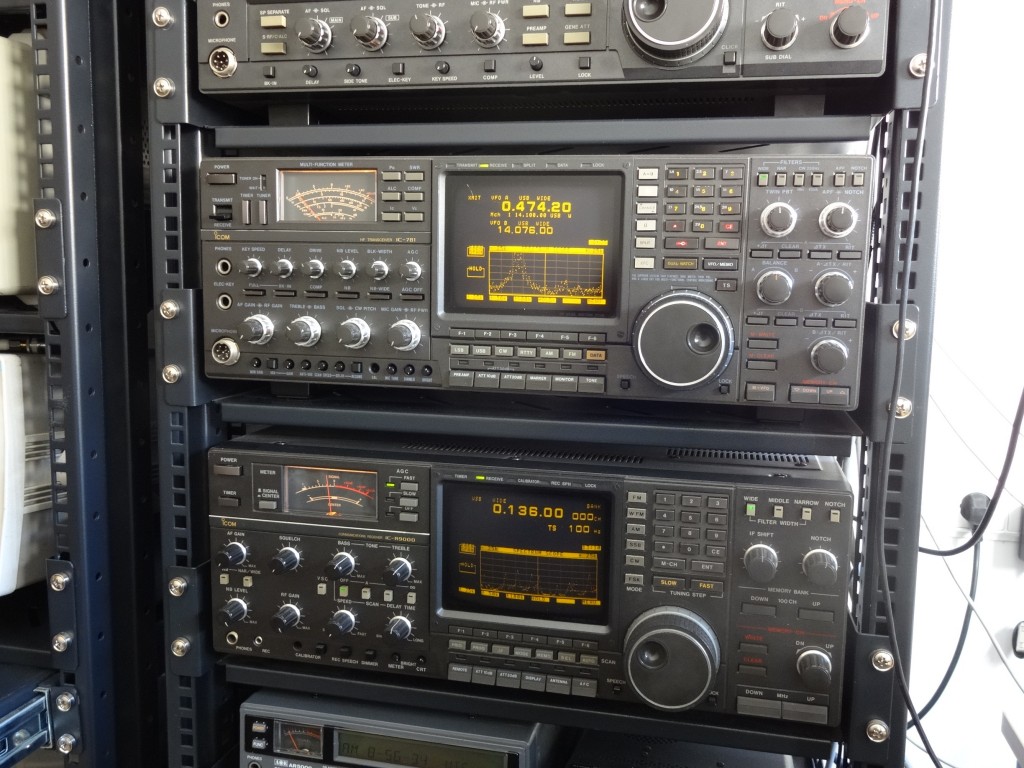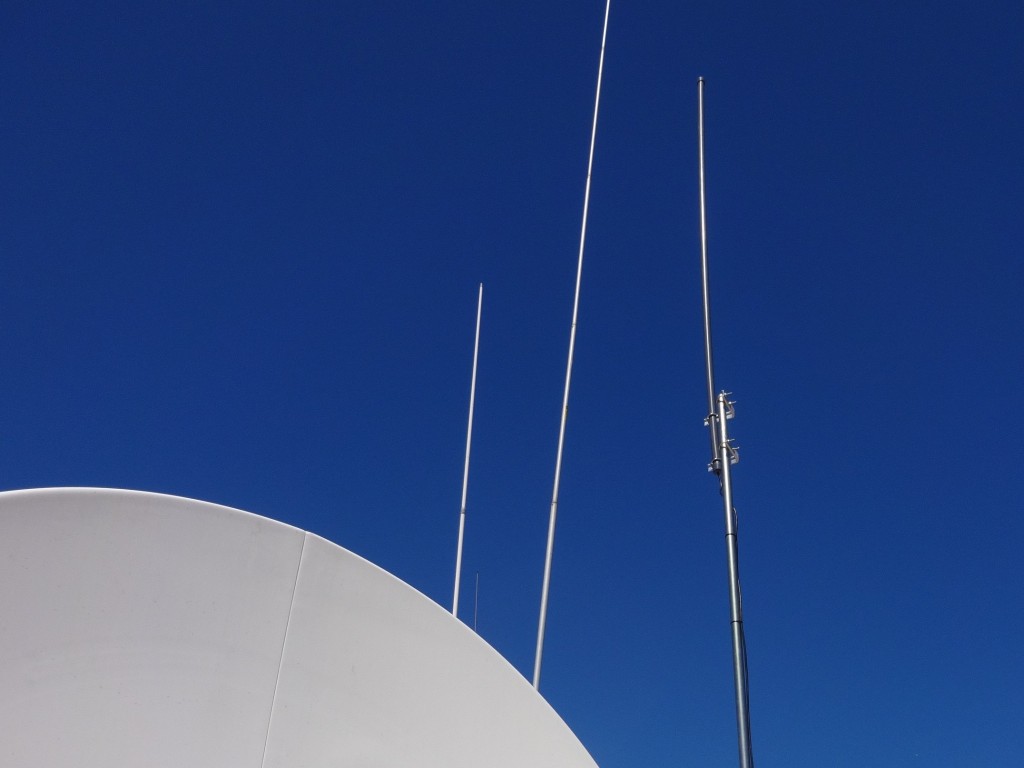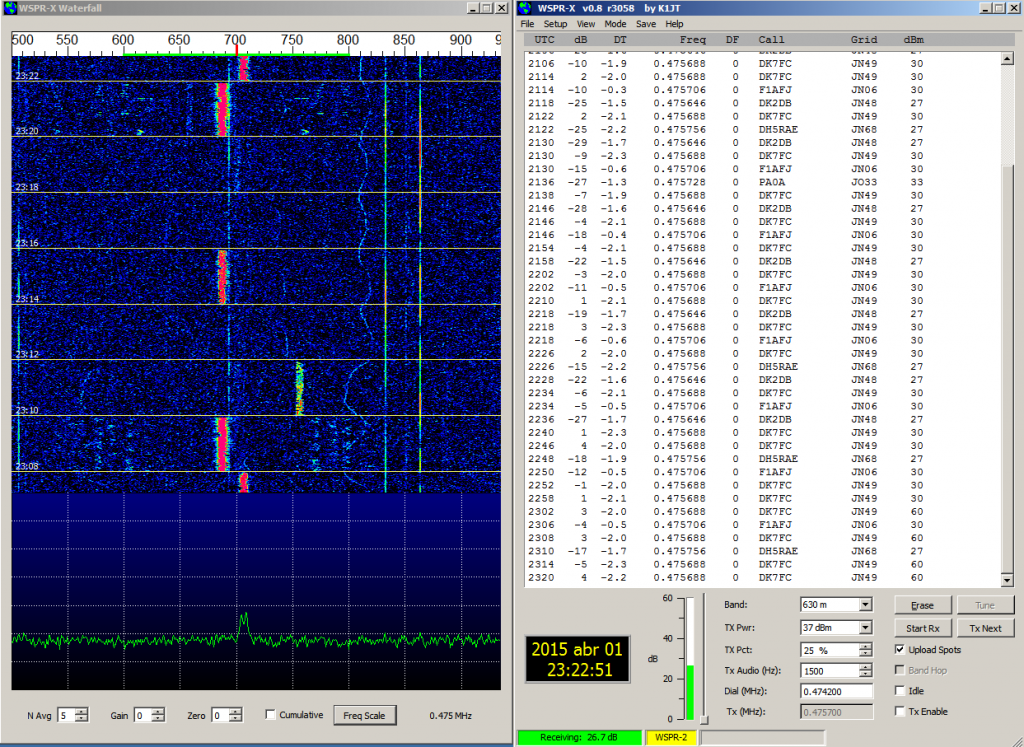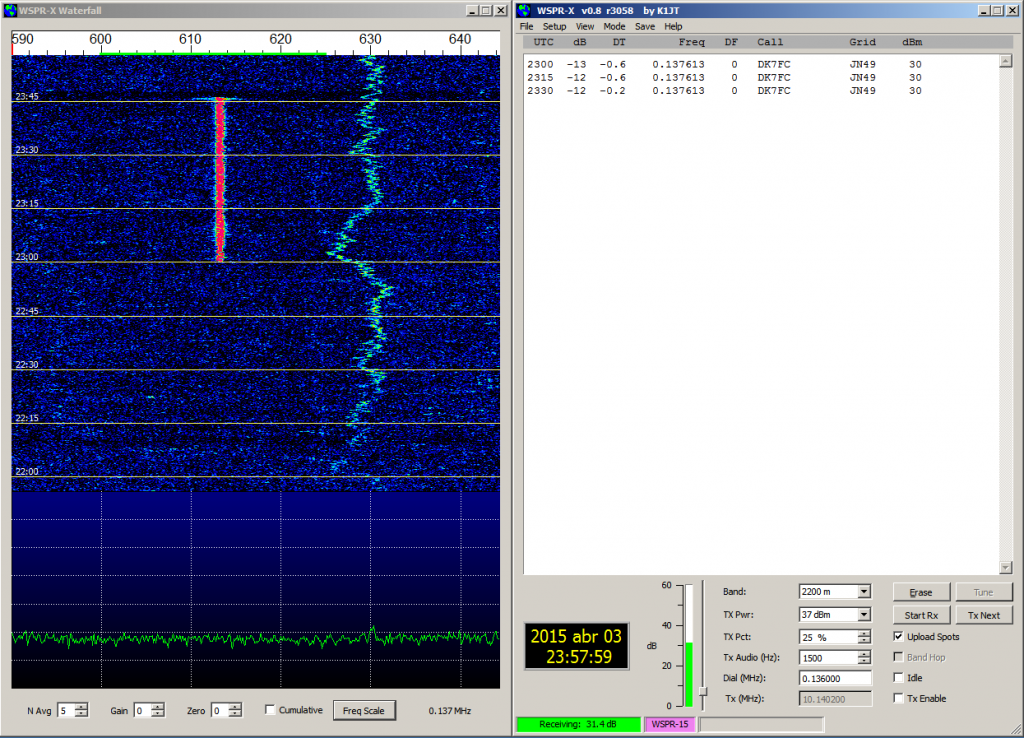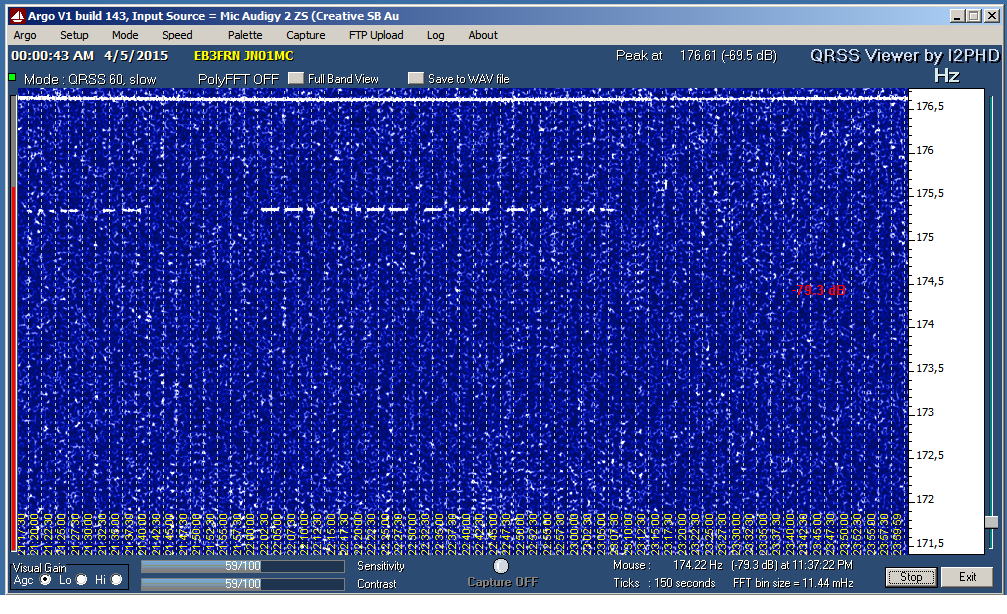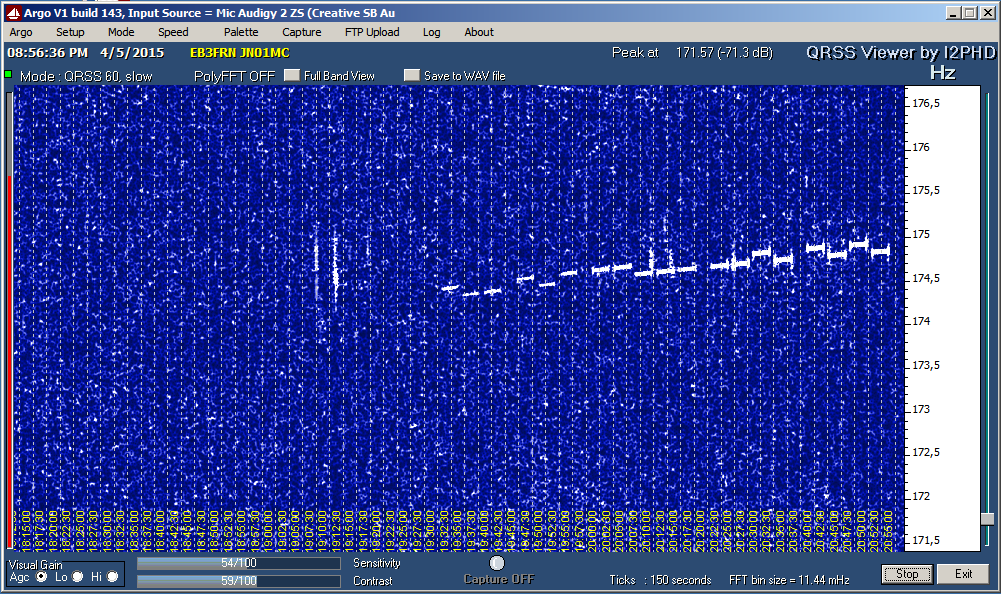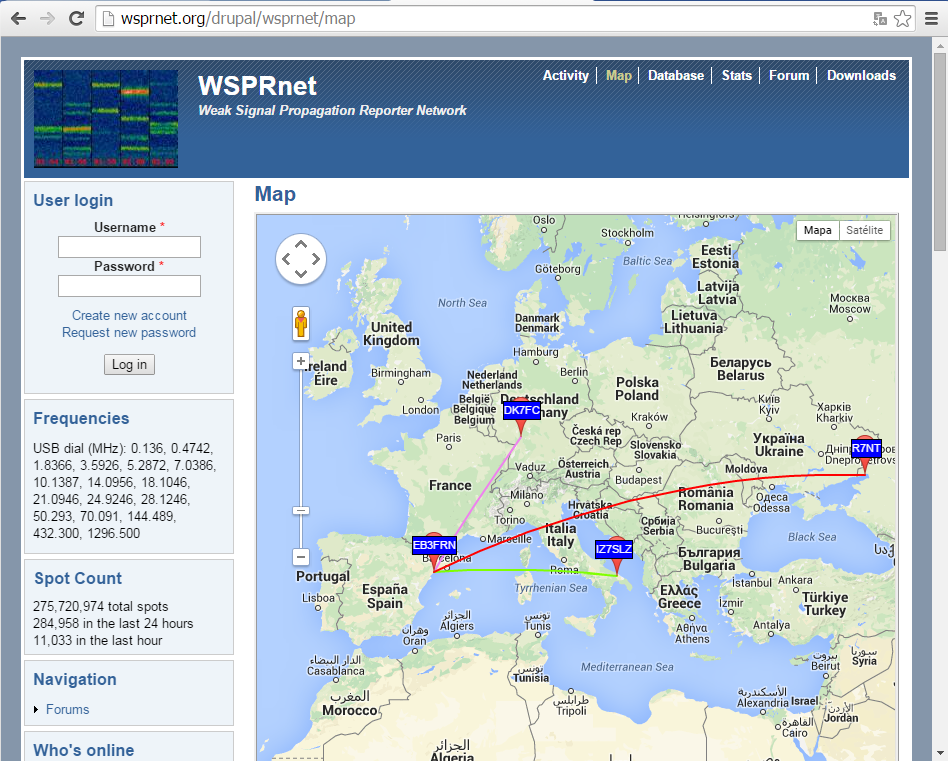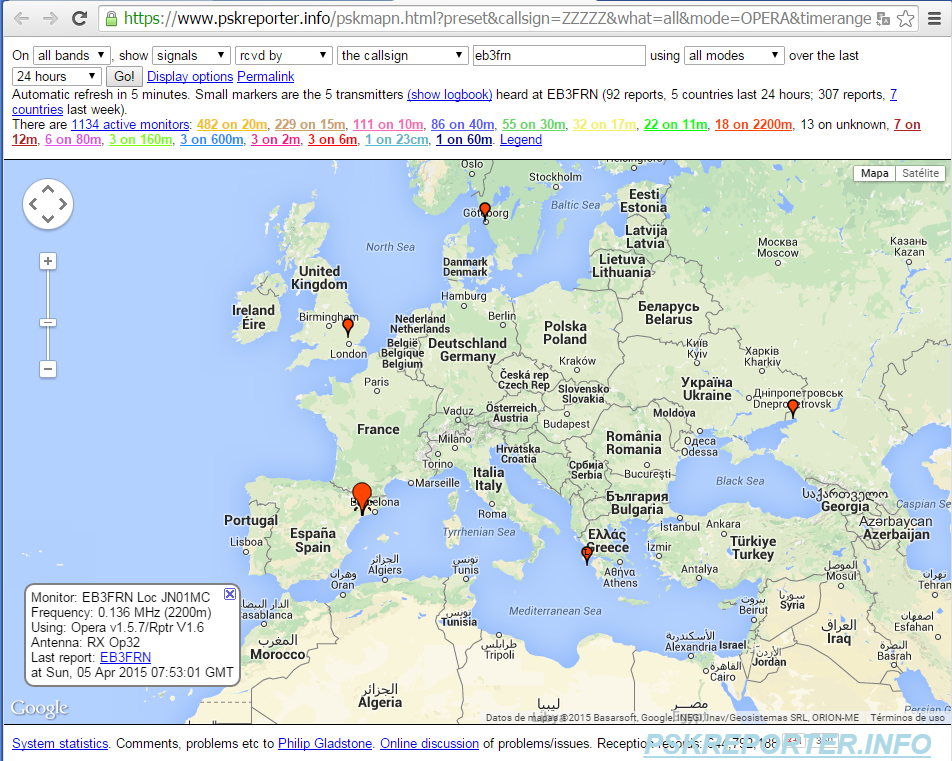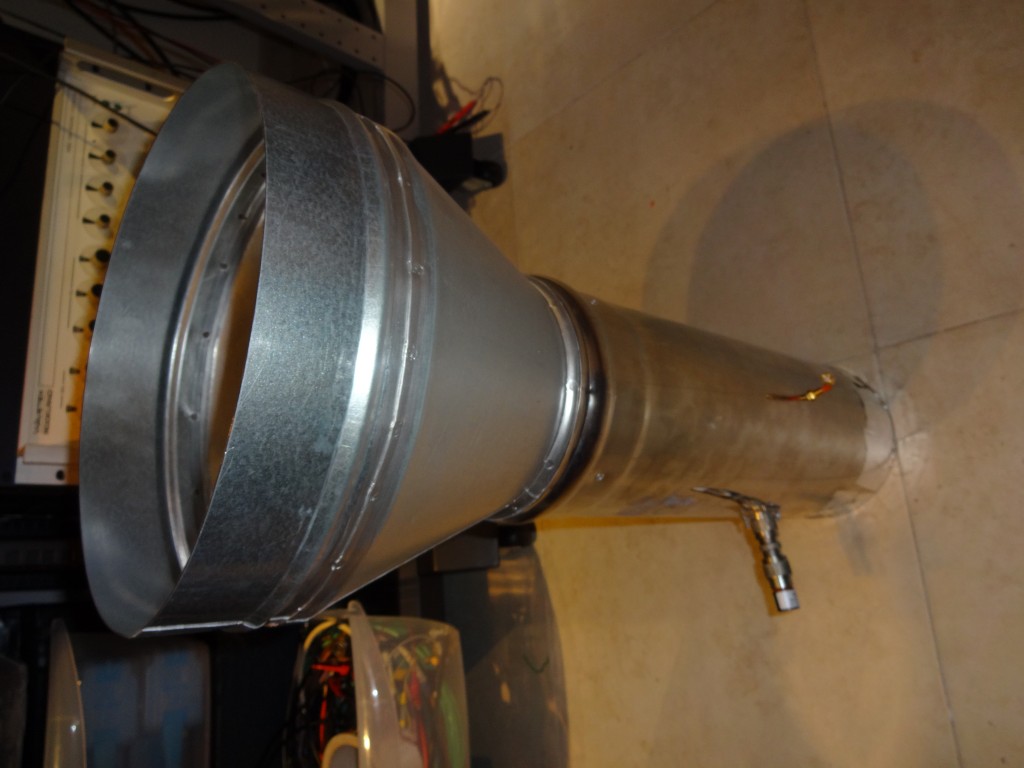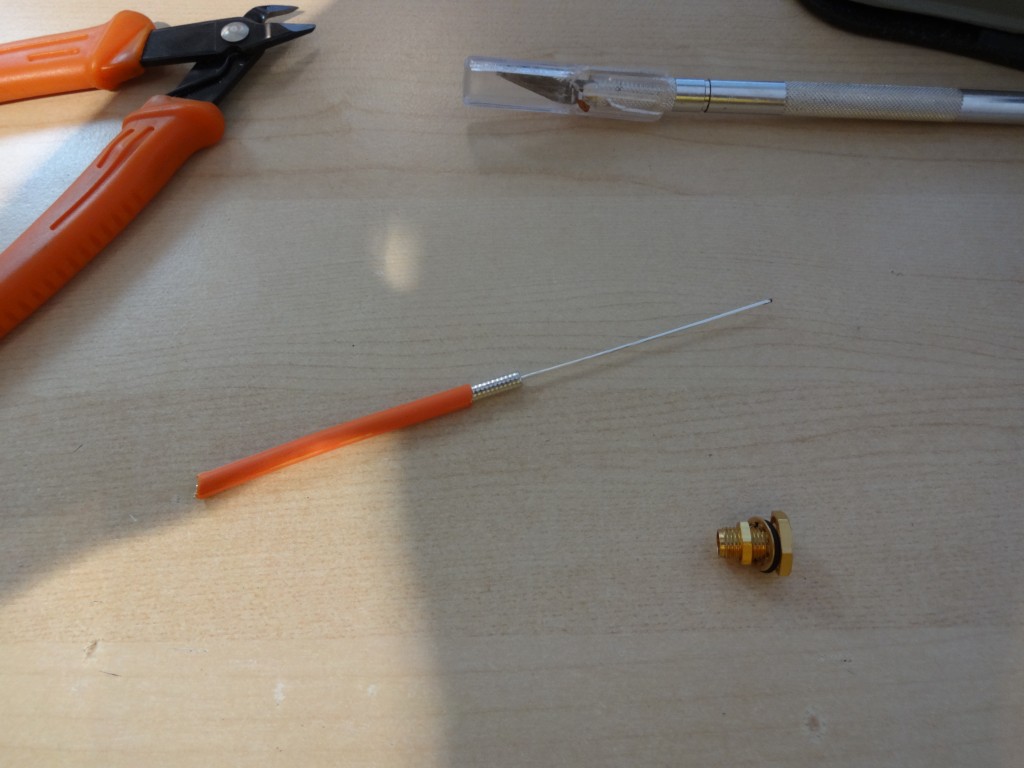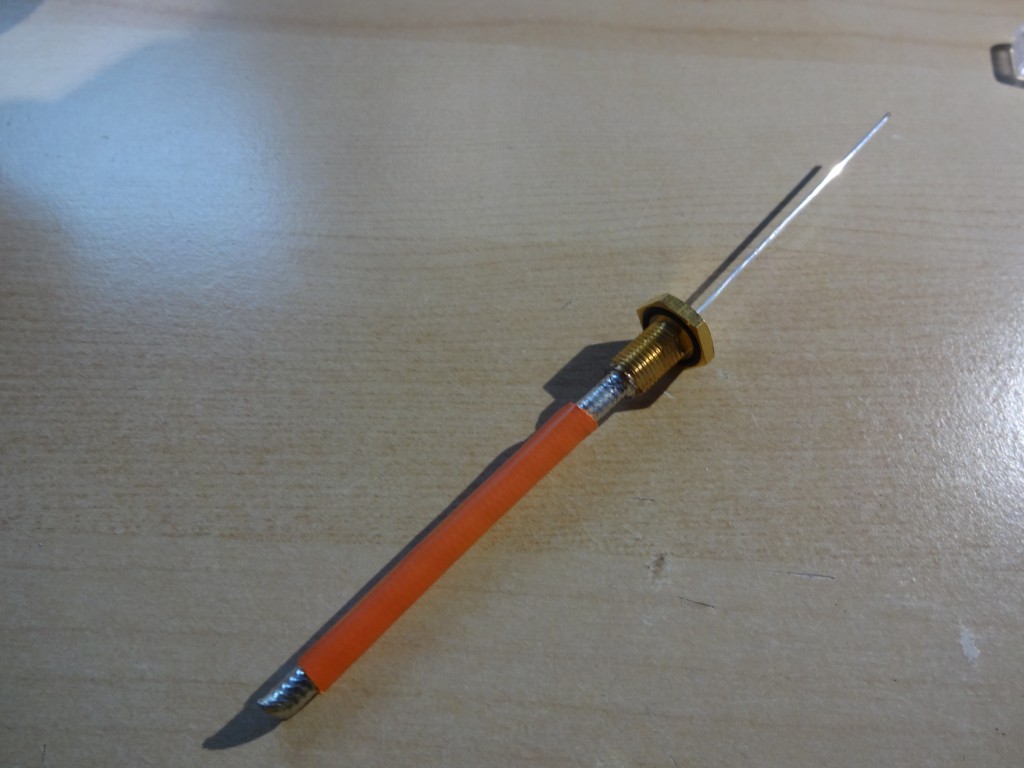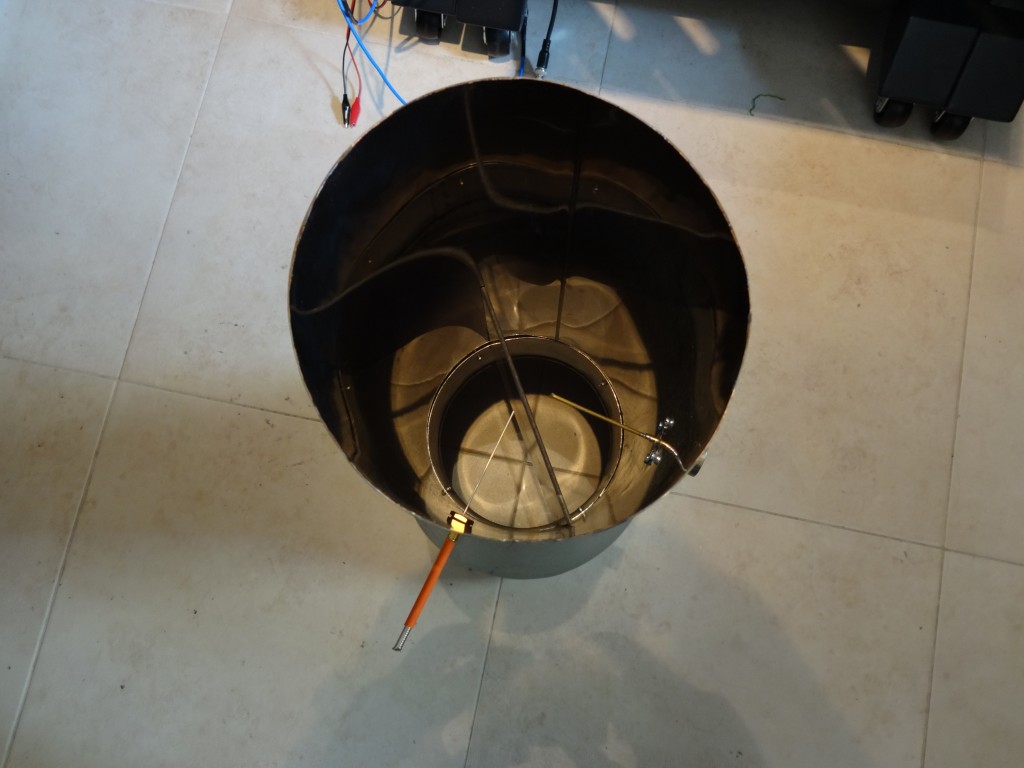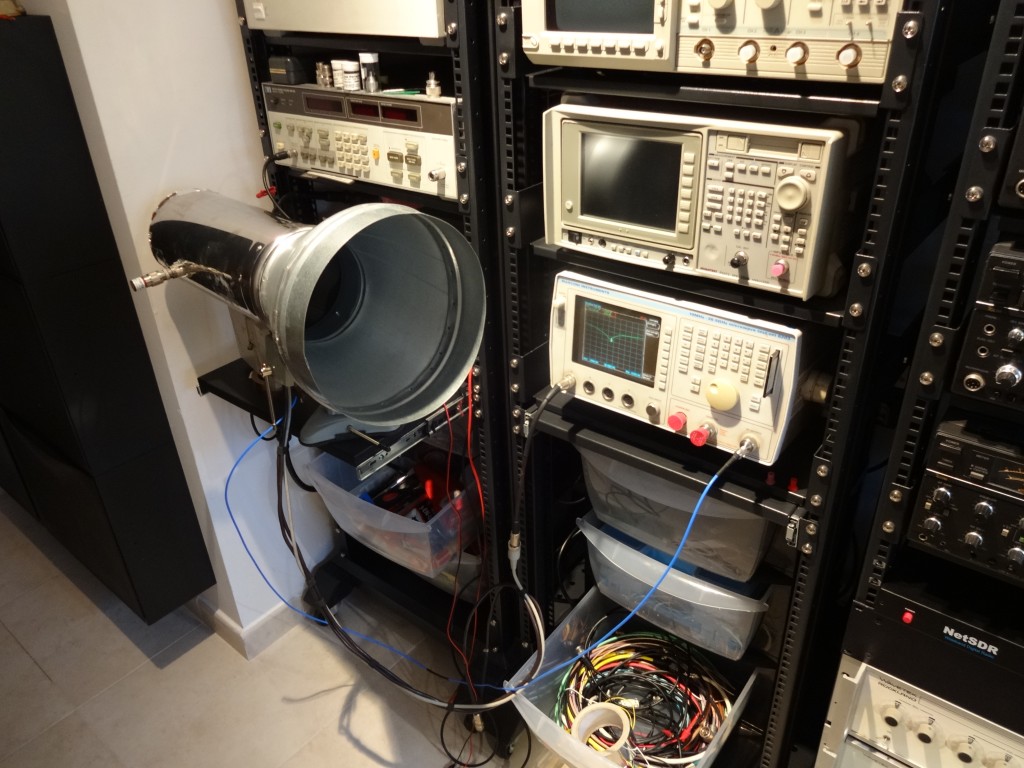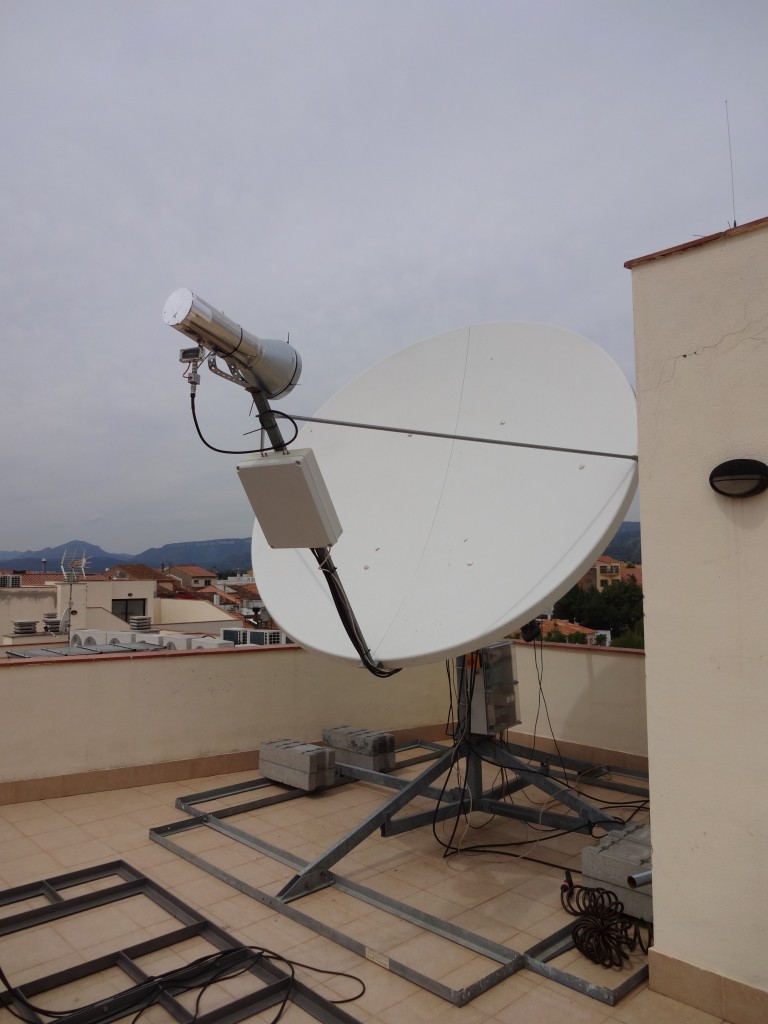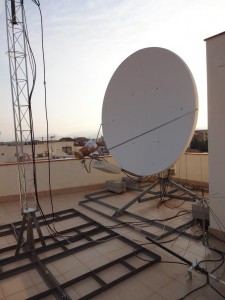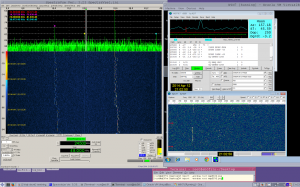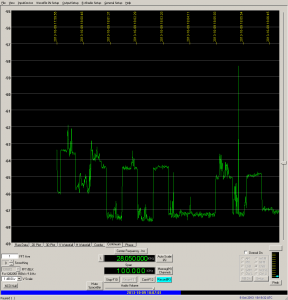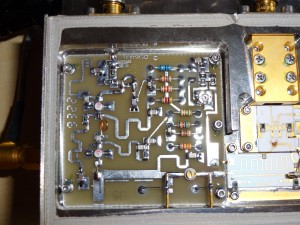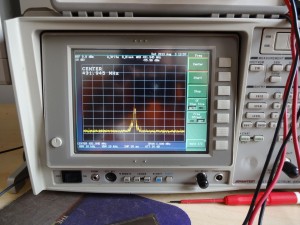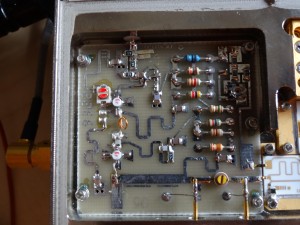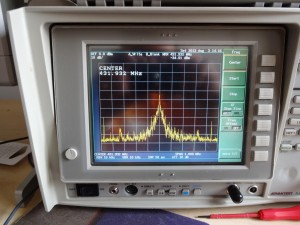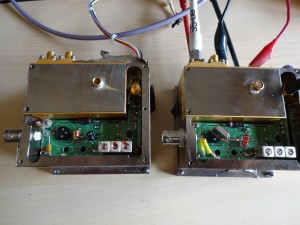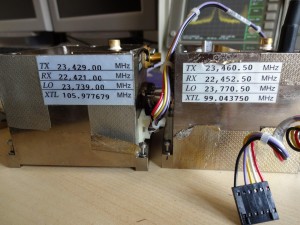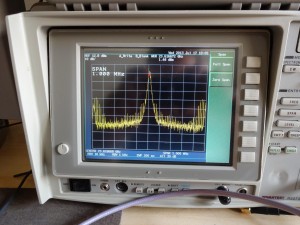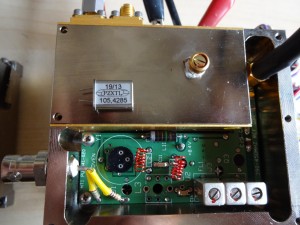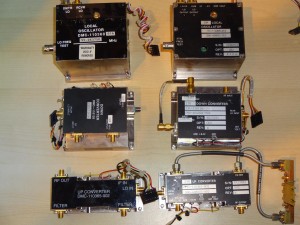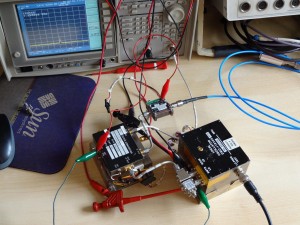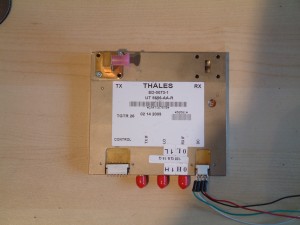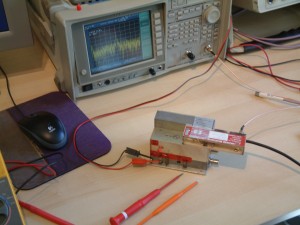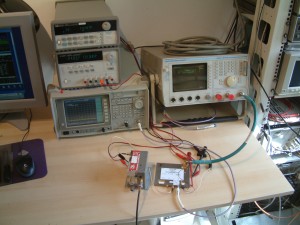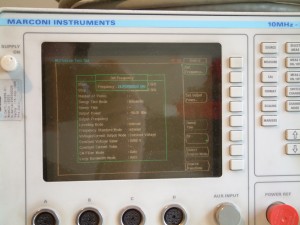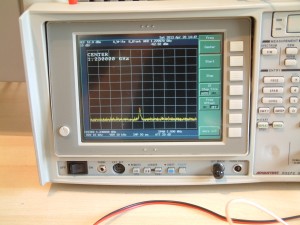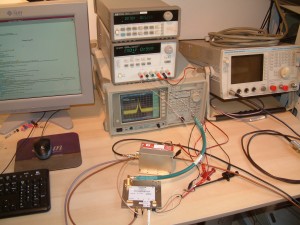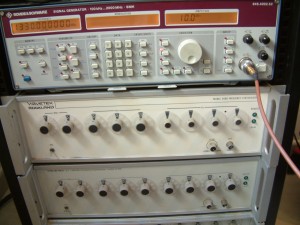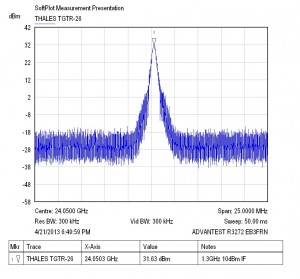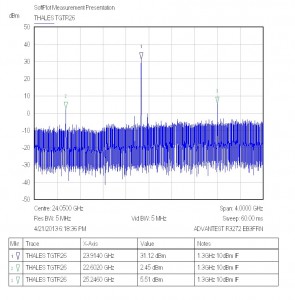After much time doing only microwaves activities, I listened the encourage words from Luis EA5DOM, to try to receive LF and MF . Luis is active in 136kHz and 477kHz in TRX and uses Opera, WSPR and have a SpectrumLab grabber.
I build a PA0RDT mini-whip antenna and erected it 6 meters over the floor, as receivers I used my Icom IC-R9000 for 136kHz and the Icom IC-781 for 477kHz. I tested Opera, WSPR and Argo for QRSS.
The most common modes are OPERA32 (32 mins period), wspr15 ( 15 mins period) in 136kHz, and OPERA-8 (8 mins period) WSPR-2 (2 mins period) in 477kHz. The OPERA and WSPR uploads to Internet the receptions as spots and is possible check online the results and distance. This is feature is very nice to compare results with another stations.
I’m really surprised for the good results and for the nice signals that can be received in this low frequencies with a small antenna. I know that this band some times not are easy for the local QRM/QRN generated by switched power supplies, motors, etc.. but with not much effort is possible get some setup to receive this bands.
I encourage that you try to receive this bands. A good point to start is the 477kHz band. It can be received easy using a base HF transceiver and antenna.
